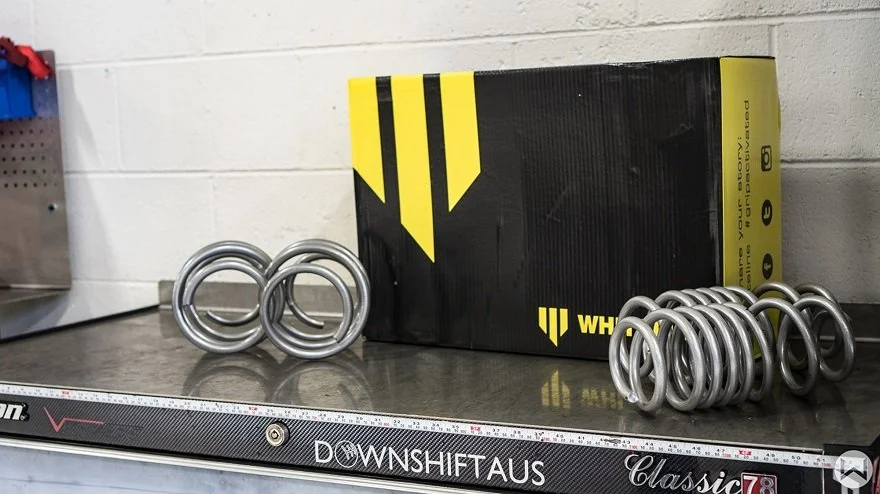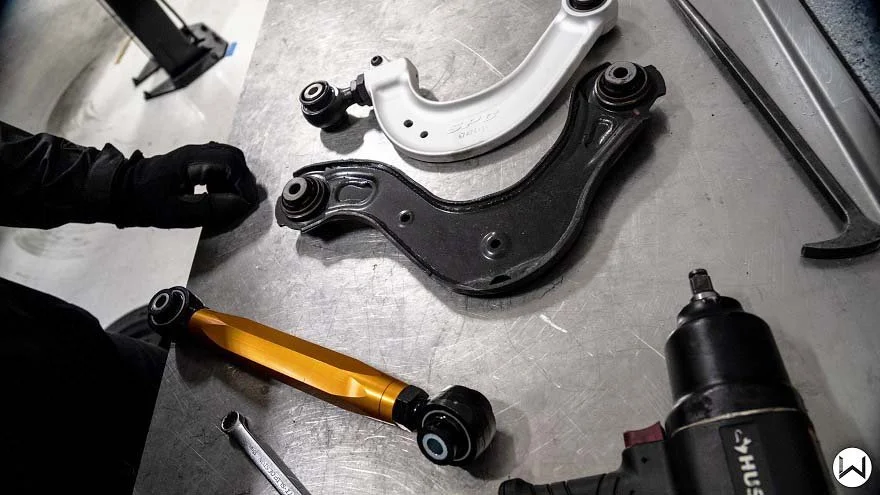Comfort and Performance, Can You Have Both? The Science of Suspension Upgrades for Your Honda
Remember the Old El Paso Taco commercial? The one where the family is arguing about tacos with hard shells or soft shells, and then the little girl suggests the brilliant idea of both and then the town rejoices with her marvelous idea. Well, your suspension is like that….sort of.
When it comes to suspension and all things performance on your car we run into a lot of compromises. We want power and fuel economy, we want looks and a low cost, and with suspension, we want performance and comfort. Today we are going to take a deeper look into suspension upgrades for your whip and see if we can have our cake and eat it too.
Let's face it, the stock suspension on most cars is designed for a comfortable and safe ride. But what if you crave more than just a smooth cruise to work? What if you want your Honda to hug corners like a pro and handle bumps like a champ? Well, that's where suspension upgrades come into play! Now to be fair the OEM set-ups are honestly very good. The handling of an Si and CTR are very well balanced out of the box and I would say that 80% of people should never touch it. But for that 20% that want to go the extra mile, some upgrades are in order.
The Basics: What is Suspension?
First things first, let's break it down. Suspension is like the unsung hero of your car. It's not just about making your ride comfy; it's also crucial for keeping your tires in contact with the road, which translates to better control, traction, and handling. Everything in your suspension is designed to keep those 4 tires planted.
They are the only 4 things touching the road and they are super important. Suspension starts with understanding suspension geometry. Let's say it's all about optimizing the angles and distances between various components of your suspension system. When these angles and distances are just right, your car will handle like a dream. We use things like springs, dampers, sway bars, bushings, and more to make this all happen. Let’s take a quick look at the major players and see how they affect both ride and comfort
Springs
The first place you would start with any suspension upgrade is the spring. The spring is a very basic component at its root. It's just some hardened steel that is wound up into a coil and supports the weight of your car.
One is placed at each tire and bears the majority of the weight of your ride. Springs are defined in a few ways; 1) is how thick the coil is, 2) how tall the coil is, 3) the spring type whether linear or progressive, and 4) the spring rate. Of all of these, the spring rate is the most crucial one. A “soft” spring is more comfortable and absorbs all the bumps in the roads better, however it is not as tight in the corners. A stiffer spring will keep the tires more planted on the road surface and allow better contact but they are not as comfortable to ride. From the factory you find your more base model trims go for comfort like an EX or LX trim Civic while trims like the Si and Type R favor more performance.
Dampers/Shocks
You can't talk about springs without talking about dampers. These two go together like peas and carrots. While a spring holds your car's weight and provides the “bounce” from the car going up and down the damper controls the rate/speed of that bounce.
If you had springs and no dampers then every time you went over a bump the car would just bounce up and down for a long time and take a while for the car to settle back out. The shock is just a damper and controls that rate. A softer damper allows more of the bounce which aids in comfort while a stiffer one will kill the bounce much sooner which makes for a stiffer ride but one where the car keeps better traction. Cars like the 10th Si and Type R come with adaptive electronic dampers which can control the damping rate based on your driving condition. Softer for the street and more aggressive for the track. This is one of the coolest advancements in suspension tech to date in my opinion.
Sway Bars
Another essential upgrade for improved handling is sway bars, also known as anti-roll bars. These bars mainly reduce body roll during cornering, ensuring your car stays flat and composed through twists and turns. They are also used to distribute cornering loads between the front and rear of the car.
The bar is very simple as it's just a giant piece of steel that connects the left wheel and tire to the right wheel and tire. There is a sway bar at the front of the car and one at the rear (in 99% of applications). Like springs, these bars have various considerations that alter how they perform. The bar can be thick or thin. It can be solid or hollow. The diameter of the bar can vary from small to large. A small bar is light and provides little effort in helping get the car to rotate in curves and less overall stiffness presenting more opportunity for body roll. A large, thick, solid, bar depending where it’s placed (front or rear) will often create more understeer or more oversteer. In most FWD application like on our Hondas, the chassis is biased towards understeer and we mainly want to help the rear rotate better or create more oversteer so we opt for a larger rear bar. Use caution however as making the bar too large and aggressive can feel like your backend wants to kick out all the time, even in small corners. It’s a balancing act to keep them aligned.
Bushings
These are little rubber or polyurethane components that play a big role in maintaining suspension alignment and reducing vibrations in your Honda. They are scattered throughout the underside of your Civic and Integra and attach everything that is a component to your chassis; Lower control arms, upper control arms, camber arms, stabilizer joints, etc. They all have bushing components to them.
If there were no bushing and everything was hard mounted you would have a super loud and harsh ride. Like everything else, this too can be upgraded in various ways. Mostly the material used plays the biggest role. It can be rubber, polyurethane, or some hybrid material in between. The rubber and poly can have various durometers reflecting how soft or stiff the bushing is. Almost everything you see coming out of OEM is rubber while performance units are usually poly. Again a stiffer component offers a more performance oriented ride that improves handling but at the cost of comfort.
Comfort vs. Performance
Now, let's talk about the balance between comfort and performance. It's essential to find the right setup that suits your driving style and daily needs.
If you're looking for a daily driver with a bit of zing, you can opt for a moderately stiff setup that won't rattle your teeth on bumpy roads. On the other hand, if you're all about that track life, go for a more aggressive setup that sacrifices comfort for jaw-dropping handling. You can see that in just the 4 components we talked about they can all vary from one end of the spectrum to the other. It truly is a balancing act.
In the world of car enthusiasts, suspension upgrades are the gateway to a more thrilling and engaging driving experience. Whether you drive a Honda Civic or Accord X, the science behind suspension upgrades can transform your daily commute into an adventure.
So, if you're itching to improve your handling and comfort, don't hesitate to explore the world of suspension upgrades. Whether you're taking on the track or conquering city streets, you'll feel the difference with every turn of the wheel. Embrace the science, unleash the potential, and enjoy the ride!
-Vincent
Co-founder






